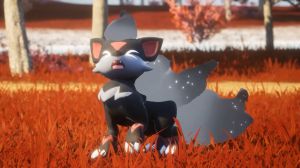
Pokemon Go has gotten another family of Shiny Pokemon for this month’s Community.
Videos by ComicBook.com
As expected, Pokemon Go‘s developers have added Shiny versions of Larvitar, Pupitar, and Tyranitar to the game as part of today’s Community Day event. Shiny Pokemon have different coloration than their normal counterparts and are typically very rare.
A Shiny Larvitar has a deeper green skin color than normal Larvitar, a Shiny Pupitar has a purple shell instead of its usual light blue shell, and a Shiny Tyranitar has skin the color of desert sand instead of its usual light green skin.
Shiny Pokemon have become a tradition of Community Day, a monthly mini-event in which a specific Pokemon spawns in mass quantities during a three hour stretch. Recent Community Days have alternated between Starter Pokemon and rare Pokemon like Larvitar or Dratini.
This might be the biggest Community Day event yet, as players are flocking back to the game due to Pokemon Go‘s tie to the recently announced Pokemon: Let’s Go, Pikachu and Pokemon: Let’s Go, Eevee games. These new games will be released for the Nintendo Switch and will give players a chance to transfer Pokemon from Pokemon Go so they can be caught and added to a player’s Pokemon: Let’s Go collection.
Players have reported some network issues surrounding Community Day, possibly due to the influx of players. Pokemon Go extended the Asia-Pacific Community Day window for two hours and player in Europe have also reported periodic outages or issues. As of press time, there was some noticeable lag in Pokemon Go, but it was more of an annoyance than a game-breaking problem.
Another recent development involving Shiny Pokemon is completed research by the Silph Road, a community of Pokemon Go enthusiasts. After collecting data for several months, the Silph Road announced that the Shiny catch rate during Community Day is approximately 1 in 25…or about a 4% chance with every Pokemon a player encounters during Community Day.
Community Day will take place from 2 PM to 5 PM ET in North and South America.





